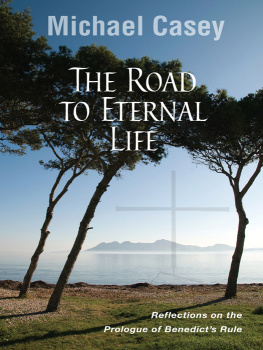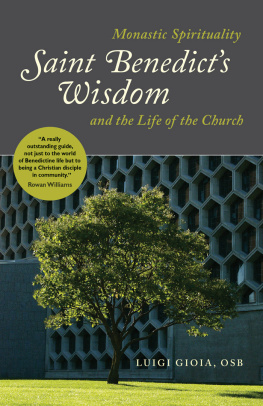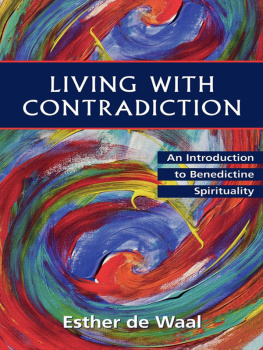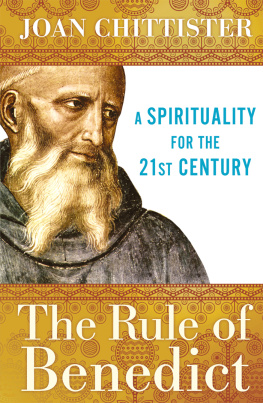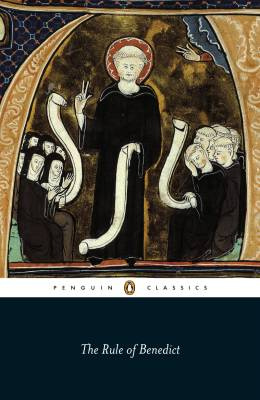Ancient monastic authors often stressed their wish to be of use to readers. Like them, Michael Casey has written a useful volume, a volume to live by. Drawing on a wealth of sources, and reading deeply in the book of experience, he shows what a vast perspective is indicated in the little Rule of Benedict, what fullness of life is in store for those who follow it with courage and coherence.
Eric Varden, OCSO
Mount Saint Bernard Abbey
Seventy-Four Tools for Good Living is Michael Caseys ingenious way of rendering the wisdom of St. Benedict for our times. As a master teacher, he weaves together sources from the monastic tradition and contemporary insights through these seventy-four tools. If this is not his best book, it is certainly his most readable and gracious offering to his students and readers. This is a book that comes from his personal lectio and living the monastic way of life in Australia. It is also a book I can use for lectio and living my monastic way of life here in Indiana. Lay contemplatives, especially oblates, will find this a cut above the books published in most bibliographies on monastic spirituality. This book matters!
Meg Funk, OSB
Our Lady of Grace Monastery
Michael Casey brings a deep lived knowledge of the monastic tradition to this splendid set of reflections on Benedicts Rule. He manages to marry faith commitment to pastoral common sense in such a manner that monks and laity as well can find answers to that request made to the old desert dwellers: Give me a good word. Casey, in fact, gives us many good words.
Lawrence S. Cunningham
John A. OBrien Professor of Theology (Emeritus)
The University of Notre Dame
In my regular university course on the Rule of St. Benedict as a mirror to present-day culture there is close reading of some chapters of the Rule. To my shame I tended to neglect chapter four a bit. Michael Caseys deep reflections in this remarkable book are nourished by a half century of monastic reading and deep psychological and existential insight. I can now draw from nearly 300 pages of wisdom on the fourth chapter of Benedicts Rule. Just to quote from Fr. Michaels preface: There is much more in Benedicts Rule than meets the superficial eye.
Wil Derkse
Andreas van Melsen Chair for Science, Society and Worldviews (retired)
Catholic Radboud University of Nijmegen
The Netherlands
Imprimi potest: Abbot Steele Hartmann, OCSO, 26 January 2014.
Cover design by Ann Blattner. Illustration: Thebaid, attributed to Gherardo Starnina (13351413), Uffizi Gallery, Florence, Italy. Courtesy of Wikimedia Commons.
2014 by Order of Saint Benedict, Collegeville, Minnesota. All rights reserved. No part of this book may be reproduced in any form, by print, microfilm, microfiche, mechanical recording, photocopying, translation, or by any other means, known or yet unknown, for any purpose except brief quotations in reviews, without the previous written permission of Liturgical Press, Saint Johns Abbey, PO Box 7500, Collegeville, Minnesota 56321-7500. Printed in the United States of America.
The Library of Congress has cataloged the printed edition as follows:
Library of Congress Cataloging-in-Publication Data
Casey, Michael, 1942
Seventy-four tools for good living : reflections on the fourth chapter of Benedicts Rule / Michael Casey, OCSO.
pages cm
ISBN 978-0-8146-3720-3 ISBN 978-0-8146-3745-6 (ebook)
1. Christian lifeCatholic authors. 2. Christian lifeMeditations. 3. Benedict, Saint, Abbot of Monte Cassino. Regula. Caput 4. Quae sunt instrumenta bonorum operum.
I. Title.
BX2350.3.C373 2014
255'.106dc23
2014001609
For Richard Franklin
After fifty years
Contents
Abbreviations
| CC | Corpus Christianorum: Series Latina |
| CCCM | Corpus Christianorum: Continuatio Medievalis |
| Dil | Bernard of Clairvaux, De diligendo Deo in SBOp 3 |
| Div | Bernard of Clairvaux, Sermones de diversis in SBOp 6A |
| DSp | Dictionnaire de Spiritualit (Paris: Beauchesne, 193795) |
| EM | Exordium Magnum |
| Hum | Bernard of Clairvaux, De gradibus humilitatis et superbiae in SBOp 3 |
| PL | J.-P. Migne, Patrologia Latina |
| RB | The Rule of Saint Benedict RM The Rule of the Master |
| S. | Aelred of Rievaulx, Sermo |
| SBOp | Sancti Bernardi Opera, 8 vols. (Rome: Editiones Cistercienses, 195777) |
| SC | Bernard of Clairvaux, Sermones super cantica canticorum in SBOp 12 |
| SChr | Sources Chtiennes (Paris: Cerf) |
Unless otherwise noted, all translations are my own.
Preface
Half a century ago, when I was a novice, a venerable old monk (whom I now realize was only in his late forties) held up a diminutive copy of the Rule of Saint Benedict and proclaimed, You will find all the wisdom you will need to live a good monastic life in this Rule. At the time I thought he was exaggerating. Fifty years later I am of a different opinion. There is much more in Benedicts Rule than meets the superficial eye.
To begin with, as Benedicts final chapter indicates, the Rule does not stand alone. It was intended as a practical gateway to the more extensive and richer tradition that preceded it and that animated most of its provisions. By living according to Benedicts Rule, we not only move into the world of John Cassian and Saint Basil but also are invited to go further back to the scriptural basis of all Christian and monastic living. Benedicts hope is that ultimately we pursue our spiritual journey by the guidance of the Gospel (RB Prol 21).
The more time I spend with the Rule the more I become convinced that it yields its deepest meaning only to those who are prepared to engage with it through close reading. This means reading very slowly; considering every word, every phrase, and every sentence; and trying to comprehend not only what is expressed but also the hidden meanings that lie beneath the words, in the space between authorial intent and written text.
For close reading to be more than arid pedantry, we need to allow the text to enter into dialogue with our lives. Drawing from our experience, we learn to appreciate more fully what Benedict is saying and, sometimes, why he is saying it in the way that he does. Conversely, the text may illuminate our own experience by helping us to understand elements of our unique past and to offer guidance concerning our future. If we so choose, reading the Rule of Saint Benedict can be life-changing and life-enhancing. These are the principles that have guided this presentation of Benedicts fourth chapter: The Implements: Good Works.
This is not a commentary but a book of reflections, written sequentially over the space of a year. As reflections, each individual section not only mirrors the part of Saint Benedicts text under discussion but also draws together different strands from more than fifty years of monastic reading. It has also been modified by my experiences around the time of writing, including the thoughts that happened to come to me from the liturgy and from whatever I was reading around that time. In particular the reader will note the strong influence of the Sermones of Saint Aelred of Rievaulx, which I was reading during the same period that these reflections were composed.
As with some of my other writings, I recommend that this book be read slowly one section at a time. Its purpose is not only to communicate my reflections on a given topic but to encourage readers to continue the process of reflection for themselves, applying what is written to their own lives and drawing on the wisdom and insight that the years have brought them.



